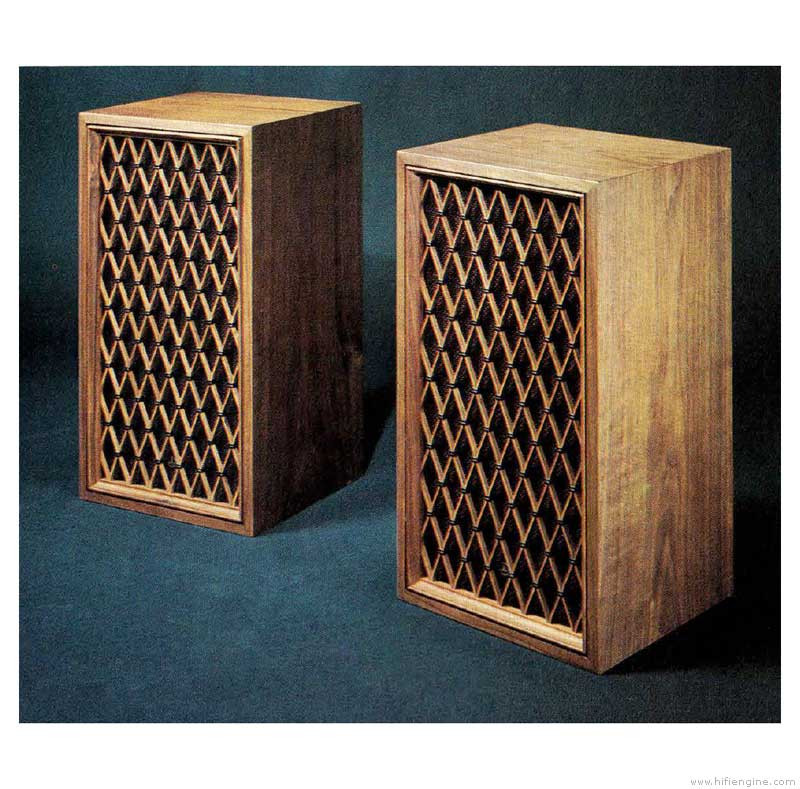The Pioneer CS-66E stands as a testament to an era of quality audio engineering, representing a classic three-way loudspeaker system that captivated listeners during the 1970s. As part of Pioneer’s esteemed CS series, the CS-66E model embodies the brand’s commitment to delivering impressive sound reproduction and aesthetically pleasing designs. For audiophiles and vintage audio enthusiasts, the Pioneer CS-66E offers a glimpse into the golden age of hi-fi, combining robust construction with articulate sound performance.
Design and Aesthetic Appeal
Echoing the design sensibilities of its time, the Pioneer CS-66E features a refined aesthetic that seamlessly integrated into the living spaces of the 70s. A key element of its visual appeal is the walnut grille, lending a touch of natural warmth and sophistication. This choice of material wasn’t merely cosmetic; the walnut grille contributed to the speaker’s acoustic properties while ensuring it complemented contemporary furniture styles. The enclosed cabinet design further enhanced its clean lines and focused the audio output, making it a visually and sonically harmonious addition to any listening environment.
 Pioneer CS-66 Loudspeaker System
Pioneer CS-66 Loudspeaker System
Image alt text: Front view of the Pioneer CS-66E vintage loudspeaker showcasing the walnut grille and driver arrangement.
Audio Performance and Specifications
At its core, the Pioneer CS-66E is engineered to deliver a balanced and immersive audio experience. This three-way, two-driver system is built around a configuration designed for clarity and depth across the frequency spectrum.
- Impressive Bass: The foundation of the CS-66E’s sound is a robust 10-inch (250mm) woofer. This driver is responsible for producing the lower frequencies, delivering what Pioneer described as “impressive bass.” This ensures that music with strong bass lines and cinematic soundtracks are reproduced with satisfying depth and presence.
- Articulate Midrange and Treble: Complementing the powerful bass, the CS-66E features a 160mm midrange driver and a chemical edge cone tweeter. This combination is crucial for achieving articulate midrange frequencies, responsible for vocals and many musical instruments, and clear, detailed high frequencies. Pioneer emphasized the system’s ability to reproduce both treble and midrange with high clarity, ensuring a rich and detailed soundstage.
Key Specifications of the Pioneer CS-66E:
- Type: 3-way, 2-driver loudspeaker system
- Frequency Response: 35Hz to 20kHz – This range indicates the speaker’s ability to reproduce a wide spectrum of audio frequencies, from deep bass to high treble.
- Power Handling: 40W – Specifies the maximum power the speaker can handle, suitable for typical home audio setups of the era.
- Impedance: 8 Ohms – A standard impedance rating, ensuring compatibility with a wide range of amplifiers.
- Sensitivity: 92dB – Indicates the speaker’s efficiency in converting power into sound volume, meaning it can achieve a considerable volume even with moderate amplifier power.
- Bass Driver: 1 x 250mm woofer
- Midrange Driver: 1 x 160mm midrange
- Tweeter: 1 x chemical edge cone tweeter
- Enclosure: Enclosed – A sealed enclosure design contributing to controlled and accurate sound reproduction.
- Dimensions: 309 x 559 x 290mm
- Weight: 11kg
Legacy and User Perspectives
The Pioneer CS-66E, while a product of the 1970s (specifically from 1970-73 production period), continues to hold appeal for vintage audio enthusiasts. User reviews, even decades later, reflect a positive reception of its sonic qualities. Owners often praise its impressive midrange performance and overall balanced sound. While some note that the low-end might not be “perfect” by modern standards, this is a common characteristic of many speakers from that era.
The enduring popularity is also evident in the community around vintage audio restoration and appreciation. As highlighted in user reviews, some enthusiasts find value in restoring and maintaining Pioneer CS-66 series speakers, replacing components like capacitors and even sourcing original drivers to bring these classic systems back to their optimal performance. This dedication underscores the lasting quality and sonic merit of the Pioneer CS-66E and related models in the CS series.
Conclusion
The Pioneer CS-66E loudspeaker system represents a significant offering from Pioneer during a pivotal period in audio technology. Its combination of aesthetic design, robust construction, and balanced sound reproduction has allowed it to remain relevant in discussions among vintage audio collectors and listeners. For those seeking a taste of classic hi-fi sound and a piece of audio history, the Pioneer CS-66E remains a noteworthy example of loudspeaker engineering from the 1970s.
